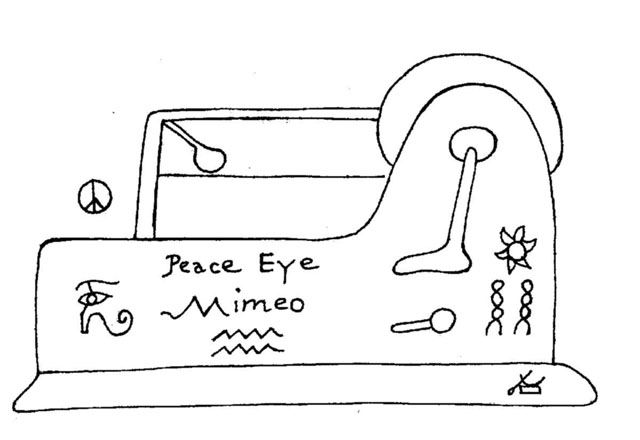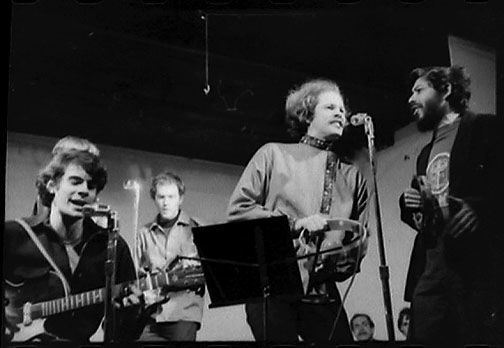Our investigation of poetry in performance takes another new turn today as we consider a group of artists and works that might loosely be grouped together under the umbrella of "talk poetics," though within that concept we'll find a multiplicity of expressive possibilities.
To start, we'll return to our old friend, John Cage, and one of his best-known works, the 1959 album Indeterminacy: New Aspect of Form and Electronic Music (Smithsonian Folkways), recorded with his frequent collaborator, David Tudor. The concept behind this work is relatively simple: Cage would read ninety microstories of various lengths — you've already encountered some of these pieces in "How to Pass, Kick, Fall, and Run" at the start of the semester — fitting each one into a one minute span (which necessitated slowing down or speeding up his delivery of certain pieces), while in a separate studio, Tudor produced a ninety-minute soundtrack that included both live and pre-recorded performances of Cage's compositions, including Concert for Piano and Orchestra and Fontana Mix. Both men worked simultaneously and independently of one another, and without rehearsing in advance of the session.
We'll listen to the first side of the first disc of the two-LP set: [MP3] You can read the album's liner notes here. Here's a link to Eddie Kohler's wonderful interactive online Indeterminacy site; the first story is here. You can generate random stories by clicking the asterisk on any page. Stories that continue across multiple pieces are interlinked using ¶ and §. The easiest way to proceed directly through the stories as you listen is to change the URL by hand (i.e. make the number at the end of the address one higher and then hit enter).
While Cage's source texts in Indeterminacy are pre-composed, poet and critic David Antin has made a name for himself through the medium of talk poems improvised on the spot, with topics or themes that are often related to the specifics of the place in which he's performing. Antin then consults tape recordings of these performances to produce written texts that constitute the published versions of his work. While Antin started out working in a more traditional manner, he developed this more extemporaneous compositional method when he grew frustrated with the limitations of reading the same texts in public over and over again. We'll consider Antin's piece, "The Noise of Time," from two different angles: first, video of his 1994 improvised talk at the University of Colorado (you don't need to watch the entire video, but maybe listen for five or ten minutes, or as long as you see fit):
Then we'll read his published version of "The Noise of Time," from Boston Review in 2001: [link]
To close, we'll switch gears into more of a rock mode, starting with a few select tracks by performance artist Laurie Anderson, taken from her 1982 crossover album, Big Science. Most of these pieces were also part of United States, an ambitious longform (i.e. running more than four hours) multimedia performance piece which Anderson performed widely throughout the early 1980s. In these pieces, Anderson combines her characteristic sprechstimme with acoustic instruments, synthesizers (mostly the Oberheim OB-Xa), devices that Anderson designed herself (primarily a doctored violin with magnetic tape stretched across the bow and a playback head built into the body) and digital processing units including pitch-shifters and vocoders.
O Superman (for Massenet)
From The Air
Let X = X / It Tango
Big Science
And finally, here's "the Bridge," a performance piece by Sonic Youth's Lee Ranaldo, which features an accompaniment of live guitar and manipulated loops:











